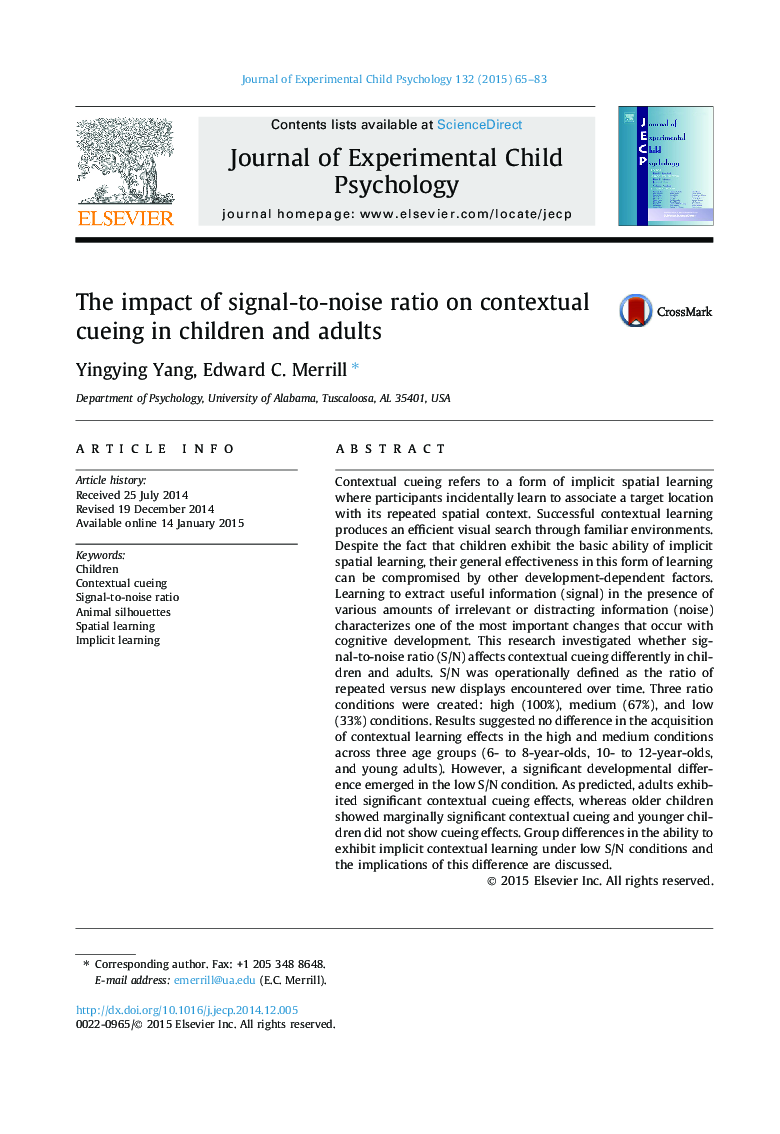| Article ID | Journal | Published Year | Pages | File Type |
|---|---|---|---|---|
| 917977 | Journal of Experimental Child Psychology | 2015 | 19 Pages |
•Contextual cueing effects of children and adults were evaluated.•The impact of signal to noise ratio on children and young adults was compared.•We manipulated the number of new and repeated displays during repeated exposure.•Age groups performed equivalently when signal to noise ratio was high.•Age differences emerged when signal to noise ratio was low.
Contextual cueing refers to a form of implicit spatial learning where participants incidentally learn to associate a target location with its repeated spatial context. Successful contextual learning produces an efficient visual search through familiar environments. Despite the fact that children exhibit the basic ability of implicit spatial learning, their general effectiveness in this form of learning can be compromised by other development-dependent factors. Learning to extract useful information (signal) in the presence of various amounts of irrelevant or distracting information (noise) characterizes one of the most important changes that occur with cognitive development. This research investigated whether signal-to-noise ratio (S/N) affects contextual cueing differently in children and adults. S/N was operationally defined as the ratio of repeated versus new displays encountered over time. Three ratio conditions were created: high (100%), medium (67%), and low (33%) conditions. Results suggested no difference in the acquisition of contextual learning effects in the high and medium conditions across three age groups (6- to 8-year-olds, 10- to 12-year-olds, and young adults). However, a significant developmental difference emerged in the low S/N condition. As predicted, adults exhibited significant contextual cueing effects, whereas older children showed marginally significant contextual cueing and younger children did not show cueing effects. Group differences in the ability to exhibit implicit contextual learning under low S/N conditions and the implications of this difference are discussed.
